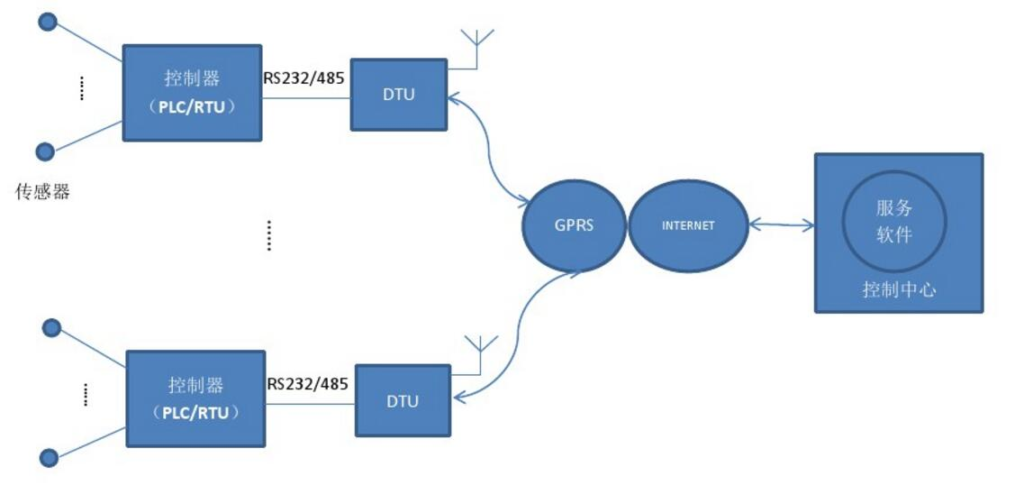433M Wireless Radar Technical Solution. In the process of industrial automation control, material level is an iportant parameter. There are many methods of material level measurement.
For different working conditions and media, material level gauges with different measurement principles can be used for measurement, such as static pressure type, float type, heavy hammer type, ultrasonic and other common material level measurement methods.
Instruments have their own characteristics and application ranges.
Radar level gauge uses advanced radar pulse wave measurement technology, with its excellent performance, especially in tanks with agitation, high temperature, large steam, strong dust, strong medium corrosion, easy scarring and other harsh measurement conditions Under the conditions, it shows its excellent performance and plays an important role in industrial automation production.
Wireless Radar System Solutions
In the production process of petrochemical, coal, cement, metallurgy and other industries, in order to ensure the safety of liquid during storage, real-time monitoring of pressure, liquid level, temperature, humidity and gas concentration on the liquid surface in the storage tank, etc.
How to collect and transmit the relevant parameters of the liquid stored in the storage tank to the remote control center, and how to initiate emergency measures in case of emergency has always troubled the management personnel.
Traditional storage tank monitoring mainly relies on periodic inspections by personnel on duty. The labor cost is high, and many human factors will be left behind, posing safety risks.
Based on 433MHZ radio frequency, wireless data transmission solution of GPRS mobile communication, real-time remote monitoring for the pressure, liquid level, temperature, humidity of the storage tank, gas concentration on the liquid surface, and other parameters that the user cares about, and in case of emergency activate the corresponding emergency facilities.

433M wireless radio frequency remote transmission technology solution: it can realize wireless networking within 20 kilometers.
The integrated 433M wireless high-frequency radar adopts the most advanced 433M wireless radio frequency transmission technology in the industry.
Its maximum transmission distance is 20Km, and it is powered by solar panels or 220V mains. Complicated processes such as on-site wiring are omitted.
The radar outputs RS485 digital signal and adopts Modbus bus protocol to realize wireless networking within 100 units.
The wireless transmission part adopts LoRa remote modem technology, which has excellent anti-interference ability and can minimize current consumption.
High sensitivity and military circuit design make its link budget reach the leading level in the industry, making it the best choice for long-distance transmission and applications with high reliability requirements.
Compared with the traditional GPRS transmission method, its cost is greatly reduced. Not limited by the mobile communication network, the reliability and anti-interference ability are greatly improved.

Technical Parameters
Measuring distance: 0-80 meters Measuring medium: liquid or solid Transmission distance: <20Km
Power supply voltage: AC85~220V or DC12~36V Radar output: RS485 Modbus protocol.
Transmission mode: 433M wireless radio frequency network (point-to-point or point-to-multipoint) Machine power consumption: < 2W
433M wireless transmission advantages: Modbus bus protocol, no need for a lot of wiring on site, can send and receive more. Low cost, reliable and stable, long service life.
GPRS wireless remote transmission technology solution
GPRS is a new type of Internet communication packet data bearing service based on the GPRS network of mobile communication, which is suitable for sudden or frequent and small amount of data transmission.
GPRS packet switching technology has the advantages of real-time online, billing according to volume, fast login, high-speed transmission, and free switching.
From the point of view of Internet access, both the central site and sub-stations are the terminals of the Internet. The so-called GPRS module is the DTU part of the substation.
Option: The central server uses a fixed IP address on the public network, and GPRS-DTU directly accesses the Internet host through the IP address.
Solution: The center server uses ADSL and other dynamic public network IP + dynamic domain name analysis software. GPRS-DTU resolves the IP address of the central server through DNS to complete two-way communication.
Scheme: The center server uses dynamic public network IP such as ADSL + **IP analysis server software + GSM MODEM, and GPRS-DTU dials up and sends radar data information to the IP analysis server, and the IP analysis server returns the host IP address through the information to complete the two-way UDP communication. Scheme 4: The center adopts GPRS-DTU or GPRS MODEM, and the whole network adopts mobile APN private network fixed IP.

Related Guides









